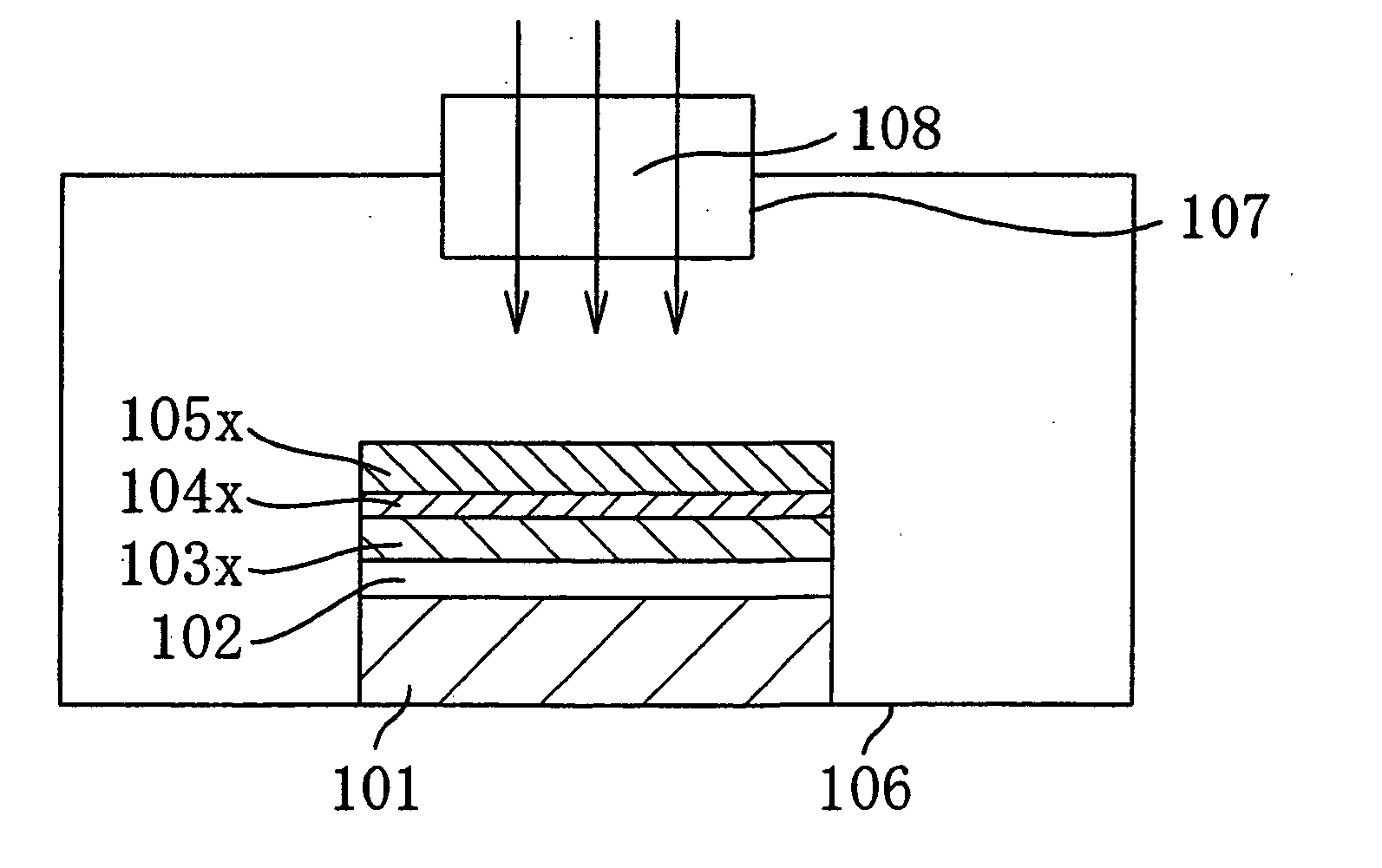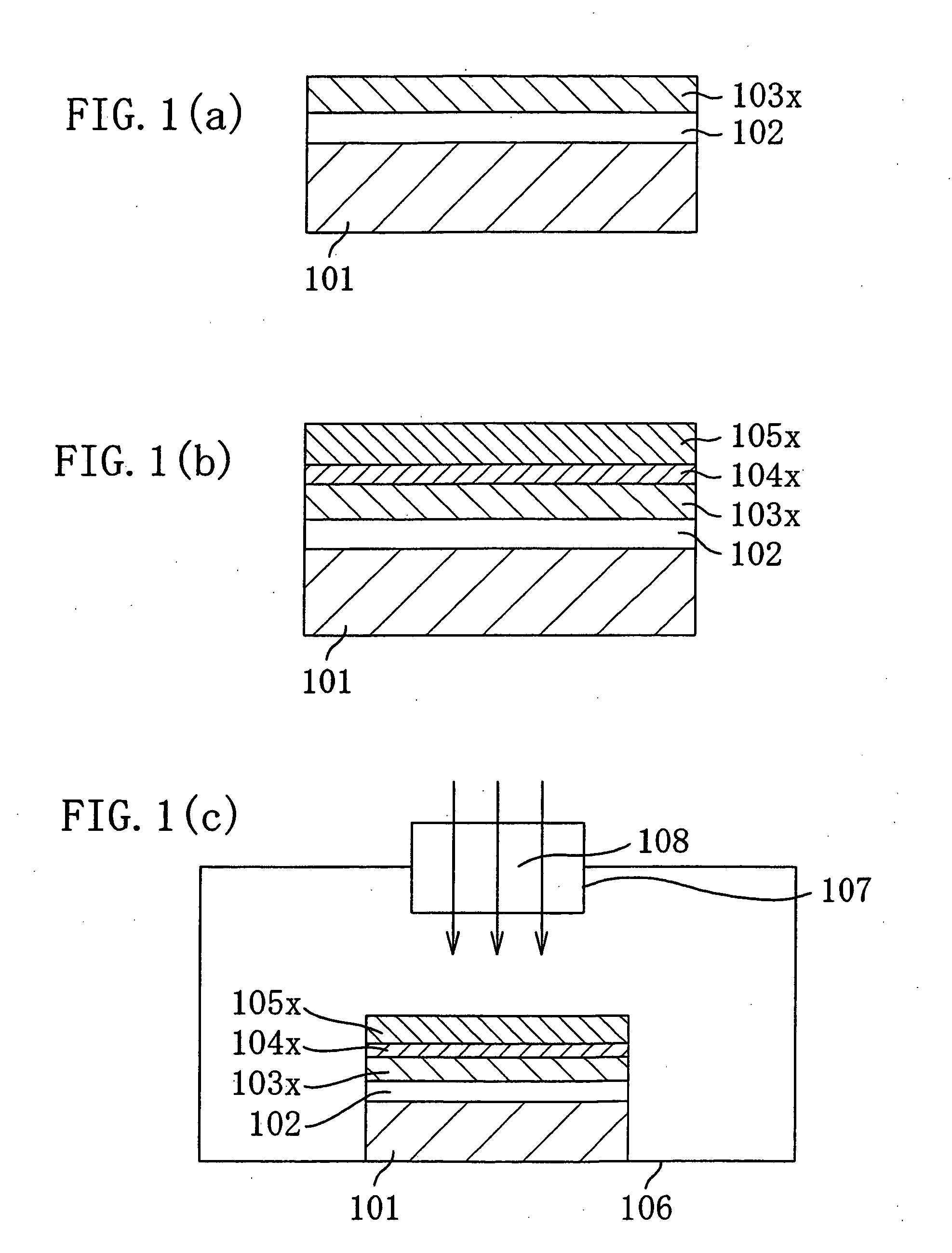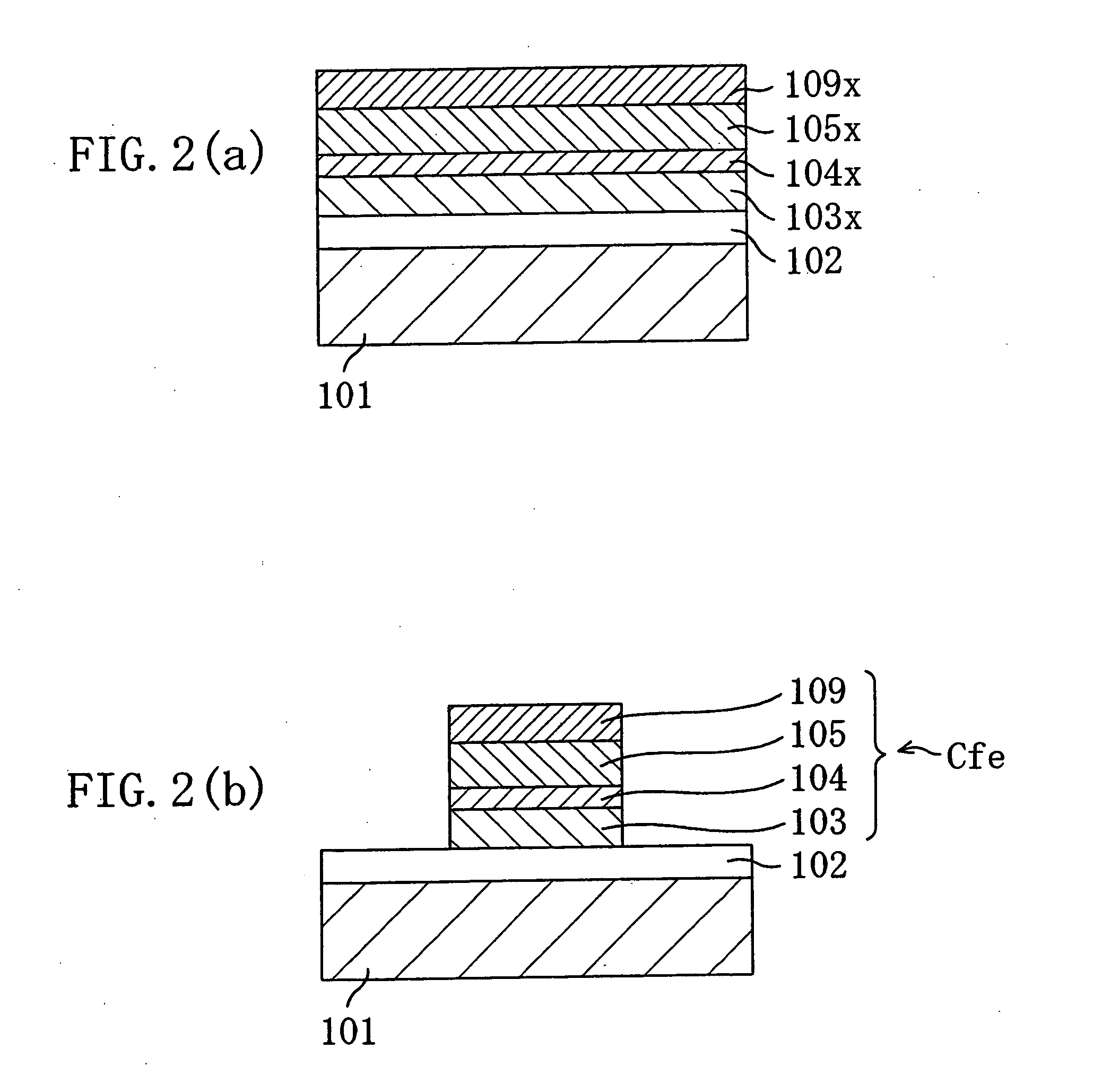Semiconductor device and method for fabricating the same
a technology of semiconductors and capacitors, applied in the direction of transistors, solid-state devices, capacitors, etc., can solve the problems of body current increasing to a problematic extent in practice, and achieve the effect of reducing parasitic capacitance and improving operating speed
- Summary
- Abstract
- Description
- Claims
- Application Information
AI Technical Summary
Benefits of technology
Problems solved by technology
Method used
Image
Examples
embodiment 1
[0068] FIGS. 1(a) through 2(b) are cross-sectional views showing respective process steps for fabricating a semiconductor device according to a first embodiment of the present invention.
[0069] First, in a process step shown in FIG. 1(a), by thermal oxidation, for example, a silicon oxide film 102 with a thickness of 100 nm is formed on a p-type Si substrate 101, and then a Pt film 103x is deposited to a thickness of 200 nm over the silicon oxide film 102.
[0070] Next, in a process step shown in FIG. 1(b), with a sputtering process, a Ti film 104x is deposited to a thickness of 6 nm over the Pt film 103x, and then a ferroelectric PZT (Pb(Zr, Ti)O3) film 105x is deposited to a thickness of 500 nm at a substrate temperature of 600° C. In this case, the Pt film 103x serves as a lower electrode and the Ti film 104x serves as a seed layer for growing the PZT film 104x.
[0071] Then, in a process step shown in FIG. 1(c), the Si substrate 101 is placed inside a chamber 106, and an electroma...
embodiment 2
[0099] FIGS. 5(a) through 6(b) are cross-sectional views showing respective process steps for fabricating a semiconductor device according to a second embodiment of the present invention.
[0100] First, in a process step shown in FIG. 5(a), by thermal oxidation, for example, a silicon oxide film 202 with a thickness of 300 nm is formed on a p-type Si substrate 201, and then an Al film 203x is deposited to a thickness of 800 nm over the silicon oxide film 202.
[0101] Next, in a process step shown in FIG. 5(b), with a sputtering or CVD process, a SiO2 film 204x is deposited to a thickness of 10 nm over the Al film 203x, and then a ferroelectric PZT (Pb(Zr, Ti)O3) film 205x is deposited to a thickness of 300 nm at a substrate temperature of 600° C. During these process steps, the Si substrate 201 is kept at 400° C. or less.
[0102] Then, in a process step shown in FIG. 5(c), the Si substrate 201 is placed inside a chamber 206, and an electromagnetic wave in the frequency range from 10 GH...
embodiment 3
[0117] FIGS. 7(a) through 8(b) are cross-sectional views showing respective process steps for fabricating a semiconductor device according to a third embodiment of the present invention.
[0118] First, in a process step shown in FIG. 7(a), local oxidation of silicon, for example, is performed so that an isolation oxide film 302 with a thickness of about 400 nm having a so-called LOCOS structure is formed on part of a Si substrate 301. Then, to control the threshold voltage of the transistor, p-type dopant ions such as boron are implanted into the Si substrate 301. A channel stopper region doped with the p-type impurity such as boron is defined in part of the Si substrate 301 that is in contact with the isolation oxide film 302. In some cases, a p-well may be defined. Thereafter, the surface of the p-type Si substrate 301 is oxidized by thermal oxidation, thereby forming a gate oxide film 303 to be a gate insulating film having a thickness of about 10 nm on an active region surrounded...
PUM
 Login to View More
Login to View More Abstract
Description
Claims
Application Information
 Login to View More
Login to View More - R&D
- Intellectual Property
- Life Sciences
- Materials
- Tech Scout
- Unparalleled Data Quality
- Higher Quality Content
- 60% Fewer Hallucinations
Browse by: Latest US Patents, China's latest patents, Technical Efficacy Thesaurus, Application Domain, Technology Topic, Popular Technical Reports.
© 2025 PatSnap. All rights reserved.Legal|Privacy policy|Modern Slavery Act Transparency Statement|Sitemap|About US| Contact US: help@patsnap.com



